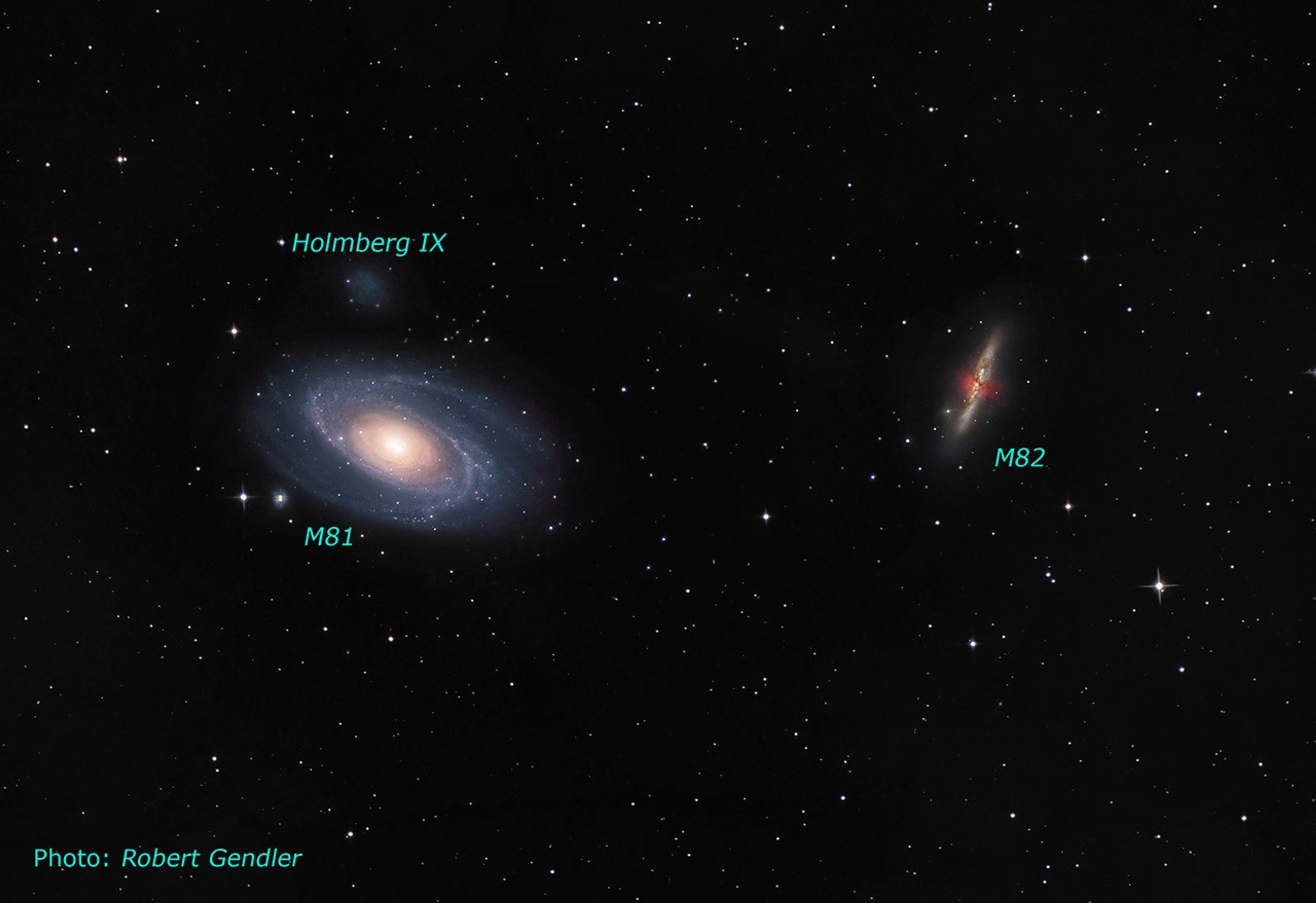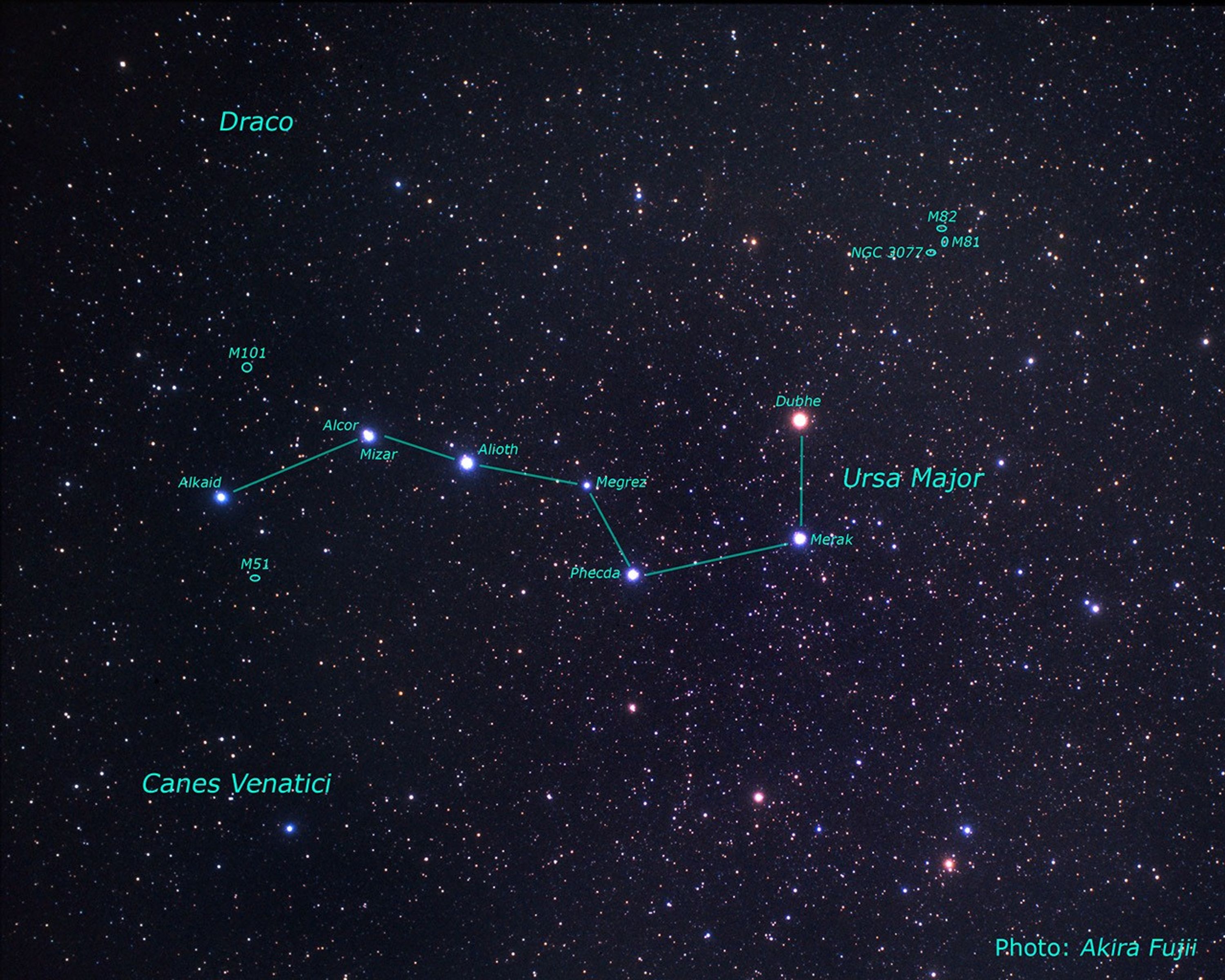1 min read
Hubble View of Arp’s Loop

About the Object
- R.A. PositionR.A. PositionRight ascension – analogous to longitude – is one component of an object's position.09h 57m 36.07s
- Dec. PositionDec. PositionDeclination – analogous to latitude – is one component of an object's position.69° 16' 59.5"
- ConstellationConstellationOne of 88 recognized regions of the celestial sphere in which the object appears.Ursa Major
- DistanceDistanceThe physical distance from Earth to the astronomical object. Distances within our solar system are usually measured in Astronomical Units (AU). Distances between stars are usually measured in light-years. Interstellar distances can also be measured in parsecs.12 million light-years (3.6 Megaparsecs)
About the Data
- Data DescriptionData DescriptionProposal: A description of the observations, their scientific justification, and the links to the data available in the science archive.
Science Team: The astronomers who planned the observations and analyzed the data. "PI" refers to the Principal Investigator.The science team comprises D. de Mello (GSFC/Catholic University of America, Washington/JHU), L. Smith (STScI/ESA/University College London), E. Sabbi (STScI), J. Gallagher (University of Wisconsin, Madison), M. Mountain (STScI), and D. Harbeck (University of Wisconsin, Madison). The Hubble image of Arp's Loop was created from HST Proposal: 10915 J. Dalcanton (University of Washington). - InstrumentInstrumentThe science instrument used to produce the data.HST>ACS/WFC
- Exposure DatesExposure DatesThe date(s) that the telescope made its observations and the total exposure time.September 22, 2006
- FiltersFiltersThe camera filters that were used in the science observations.F435W (B) and F814W (I)
- Object NameObject NameA name or catalog number that astronomers use to identify an astronomical object.Arp's Loop
- Object DescriptionObject DescriptionThe type of astronomical object.Collection of Blue Stars
- Release DateJanuary 8, 2008
- Science ReleaseHubble Finds that “Blue Blobs” in Space Are Orphaned Clusters of Stars
- Credit

The HST image is a composite of separate exposures made by the ACS instrument on the Hubble Space Telescope. Two filters were used to sample broad wavelength ranges. The color results from assigning different hues (colors) to each monochromatic image. In this case, the assigned colors are: Blue: F435W (B) Green: F435W (B) + F814W (I) Red: F814W (I)

Related Images & Videos
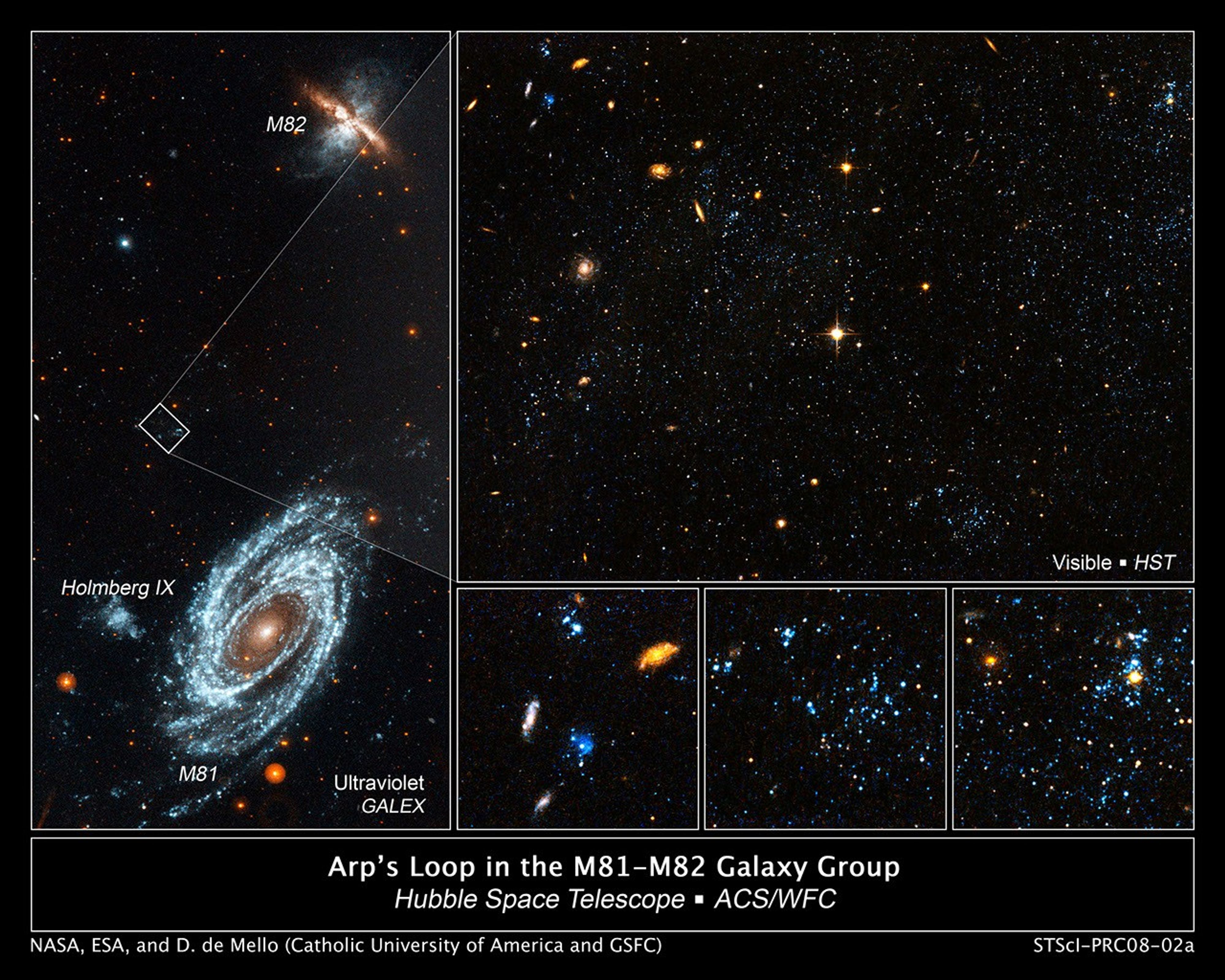
Location of the Blue Blobs in Galaxy Group
[LEFT] A GALEX ultraviolet image of the interacting galaxies M81 and M82, which lie 12 million light-years away in the constellation Ursa Major. The gravity from each galaxy dramatically affected the other during their last close encounter, 200 million years ago. Gas density...

Dwarf Galaxy Holmberg IX
This loose collection of stars is actually a dwarf irregular galaxy, called Holmberg IX. It resides just off the outer edge of M81, a large spiral galaxy in Ursa Major. This image was taken with Hubble's Advanced Camera for Surveys in early 2006. Holmberg IX is of the so-called...
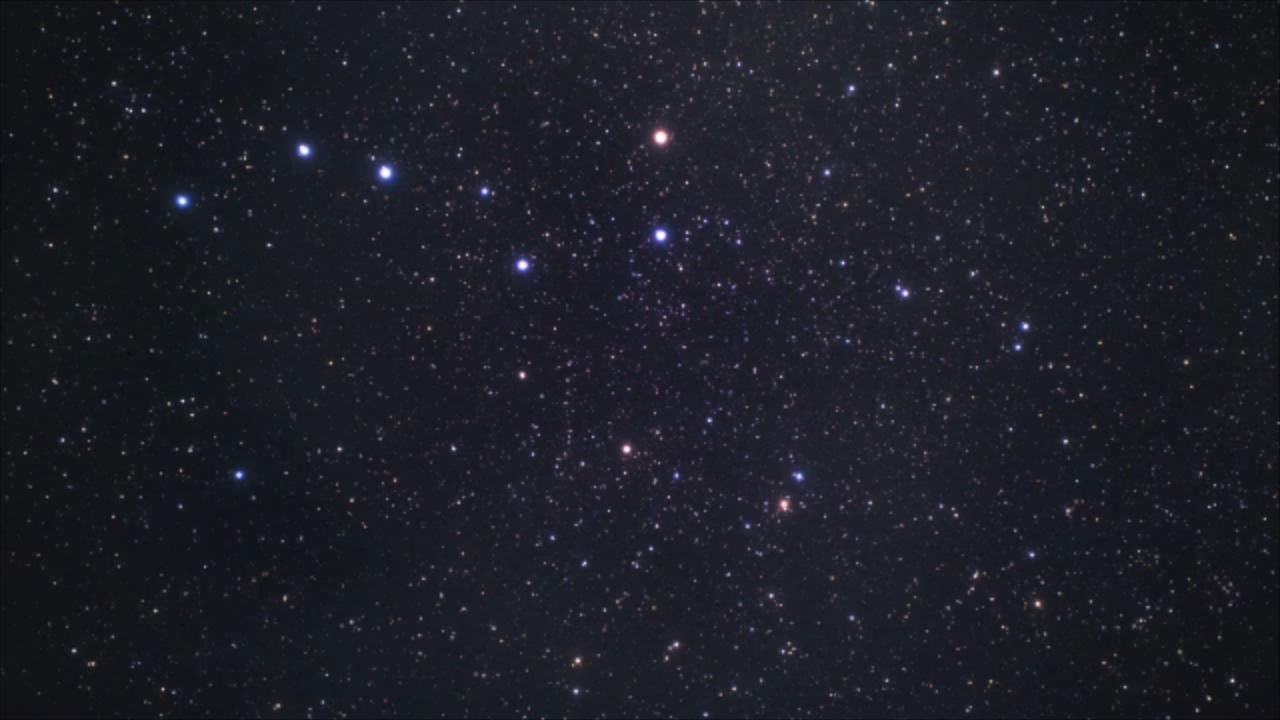
Hubble Zooms in on Dwarf Galaxy
This is a zoom into the dwarf irregular galaxy called Holmberg IX. It resides just off the outer edge of M81, a large spiral galaxy in the constellation Ursa Major. Video starts with a backyard view of Ursa Major. Camera zooms into the M81 and M82 galaxy pair. Scene ends with...
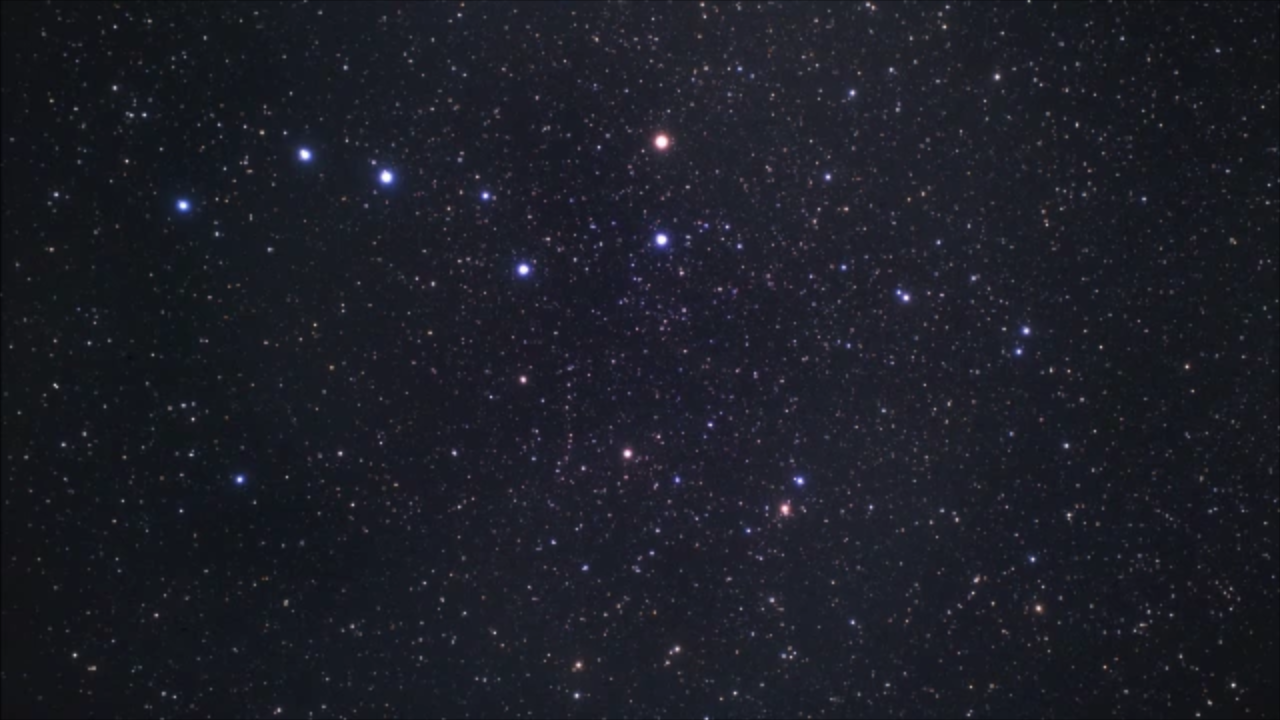
Hubble Zooms in on "Blue Blobs" in Space
This is a zoom into the "blue blobs" found along a wispy bridge of gas strung among three colliding galaxies, M81, M82, and NGC 3077 residing about 12 million light-years from Earth in the direction of the constellation Ursa Major. Astronomers using the Hubble Space Telescope...
Share
Details
Claire Andreoli
NASA’s Goddard Space Flight Center
Greenbelt, Maryland
claire.andreoli@nasa.gov


























